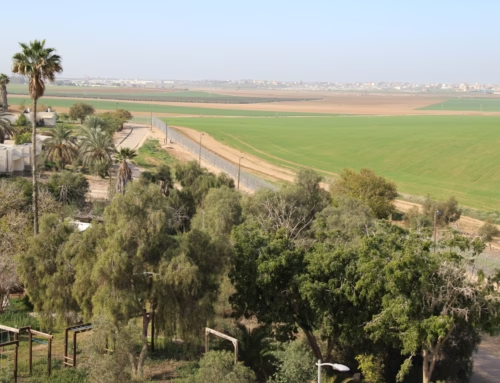The Red South
In February, the ground in the Shokeda forest is covered with red anemones which bloom in great numbers. This phenomenon has become a major tourist attraction, drawing visitors from all over Israel.
![PikiWiki_Israel_10702_Plants_of_Israel[46]](https://www.israelreport.org/wp-content/uploads/2023/01/PikiWiki_Israel_10702_Plants_of_Israel46.jpg)
All anemones in the south are red. The red flowers are more resistant to dry climates. Photo: Ruthi Rothstein
The Shokeda forest in northwestern Negev, part of the desert near the Gaza Strip, is a tourist attraction in the early spring in the desert due to the large number of red anemones that cover the ground. When winter ends, the forest begins to bloom with renewed vigor and breathtaking beauty. The anemones can bloom from February to early April. The area is then called “Darom Adom” – (The Red South) after all the flowers that bloom at this time of year.
Hundreds of thousands of visitors from all over Israel arrive during this period to participate in events, nature walks and activities for the whole family in the countryside.
Every year, the Darom Adom Festival is staged when the usually green landscape of the northwestern Negev is covered in a carpet of red anemones. Throughout the month of February, the festival offers a wide variety of family-oriented activities in the Eshkol region.
Great tourist attraction
This year, the festival hosted a mountain bike marathon, poetry readings, concerts with Israeli artists and much more. In the forest, there are recreation areas for families looking for quality time with their children, but also for hikers, cyclists and other visitors to festivals and events nearby.
The first trees in the Shokeda forest were planted in 1957. The dominant species are eucalyptus, pine, and casuarina. The forest also has very old tamarisk trees estimated to date from the British Palestine Mandate or from the late Ottoman period.
In November 2013, the Nature Conservation Society in Israel and Ynet arranged a vote in which the anemone was chosen as Israel’s national flower. The anemone is a protected plant in Israel, and it is prohibited to pick it.
Threatened with extinction in the ‘50s
In the 1950s, the anemone was at risk of extinction due to extensive use of the flowers for commercial purposes, and more. A law passed in the ‘60s banning their picking, and an awareness campaign by the Nature Conservation Society which used the anemone as one of its symbols, led the public to stop picking anemones, which returned and spread in their natural habitats across the country.
The anemone is a perennial plant, often bright red, but also white, purple, and from dark blue to light pink. It blooms for a few days, opens during the day, and closes at night. On rainy days, the flowers may be closed all the time.
Non-red anemones are only found in northern Israel while all anemones in the south are red and are more resistant to dry climates and shine blood-red on the slopes of the desert.



